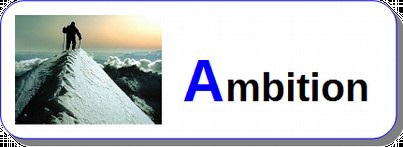The coach will create an open non-judgmental space where the client (and the sponsor) will feel at ease. A space where the client will feel supported and understood, ready to share their intent and develop their thoughts freely, but also ready to engage in topics that might be uncomfortable at first. At the beginning of each session, the coach will remind the client that he holds this safe space for them. Over time, trust will increase together with the client’s confidence in the coaching process and coaching effectiveness.
 The second step is named “Explore”. The coach helps the client to understand their present situation. The detailed understanding of where the client is at the beginning of the coaching process is critical here. The coach also questions the client’s impact on this situation, and inquires about the client’s interactions with their environment, their team, their organization, their family and any other potential stakeholders.
The second step is named “Explore”. The coach helps the client to understand their present situation. The detailed understanding of where the client is at the beginning of the coaching process is critical here. The coach also questions the client’s impact on this situation, and inquires about the client’s interactions with their environment, their team, their organization, their family and any other potential stakeholders.
In this phase, depending on the purpose of the coaching program, the client will also explore more in-depth who they are and what works well. Faithful findings from assessments run in the past like psychometric tests measuring values, strengths, skills or personality traits or 360-degree feedback assessments may be brought into the coaching process there. If required by the client or sponsor, additional assessments or exercises may be run. However, these are by no way necessary.
Guided by the coach, the client will discover, analyze and question their values, beliefs, strengths and talents and reassert them. In accordance to the purpose of the coaching process, these will be helpful to induce powerful changes and transformations aligned with who the client is in full authenticity. Any goal set, any decision taken will only become reality if aligned with the clients values and supported by their talents and strengths. Deeper self-awareness is a key concept here. This will increase the client’s self-confidence and self-esteem, ensure that they stay committed and accountable, that their energy level and motivation are high and that creativity can arise, enabling goal achievement.
 The third step is named “Ambition”. The coach challenges the client to create a vision of a future where they successfully accomplished what they intended when starting the coaching process. The client is invited to envision what would work well in the future and dream big, leaving their comfort zone, opening to new perspectives and new ways.
The third step is named “Ambition”. The coach challenges the client to create a vision of a future where they successfully accomplished what they intended when starting the coaching process. The client is invited to envision what would work well in the future and dream big, leaving their comfort zone, opening to new perspectives and new ways.
Based on the results of the Exploration phase, based on the situation identified and the client’s values, beliefs, strengths and talents, the coach will ask the client to focus on their coaching intent. The client will have a rough idea about what they want to reach with coaching. Now it is time to get more specific and define what is to be achieved. It is time to be courageous and ambitious. Supposing that almost anything is attainable, having their strengths in mind, the client will outline the pursued outcome as detailed as possible. The clouds around the mountain to climb should be blown away and the summit of the mountain should be sharply visible. Answers to the whats, whos, hows, whens, and wheres will be formulated.
The coach appeals to the client’s desire for achievement and facilitates the emotional experience of reaching success, a state of higher satisfaction and happiness routed in authenticity, related to the purpose of the coaching program set at the beginning. The client is invited to draw a future where aspiration and set goals have been achieved and visualize the experience. Energy level and motivation to reach that state in reality should consequently rise.
 The forth step is named “Modeling”. The coach will hold the image formulated in the Ambition phase and support the client to own it and to design a scheme to achieve it. The client will set up a game plan. Having the ultimate goal in sight and capitalizing on their values and strengths, the client determines the planning and prioritizing process that would work well, supported by their coach. They are invited to become architects who draw layer by layer an accurate sketch or to become a mountain guide planning the ascent step by step, mile by mile up to the summit.
The forth step is named “Modeling”. The coach will hold the image formulated in the Ambition phase and support the client to own it and to design a scheme to achieve it. The client will set up a game plan. Having the ultimate goal in sight and capitalizing on their values and strengths, the client determines the planning and prioritizing process that would work well, supported by their coach. They are invited to become architects who draw layer by layer an accurate sketch or to become a mountain guide planning the ascent step by step, mile by mile up to the summit.
The client is encouraged to generate options and explore different paths to achieve their ambition. The coach will propose them to question established solutions, to unearth new orientations and appeal to their creativity and authentic self. If need be, the coach will help the client to shift perspectives and reframe a disempowering, limiting prospect into an empowering one. The impact of the various paths on the contextual environment will also be approached.